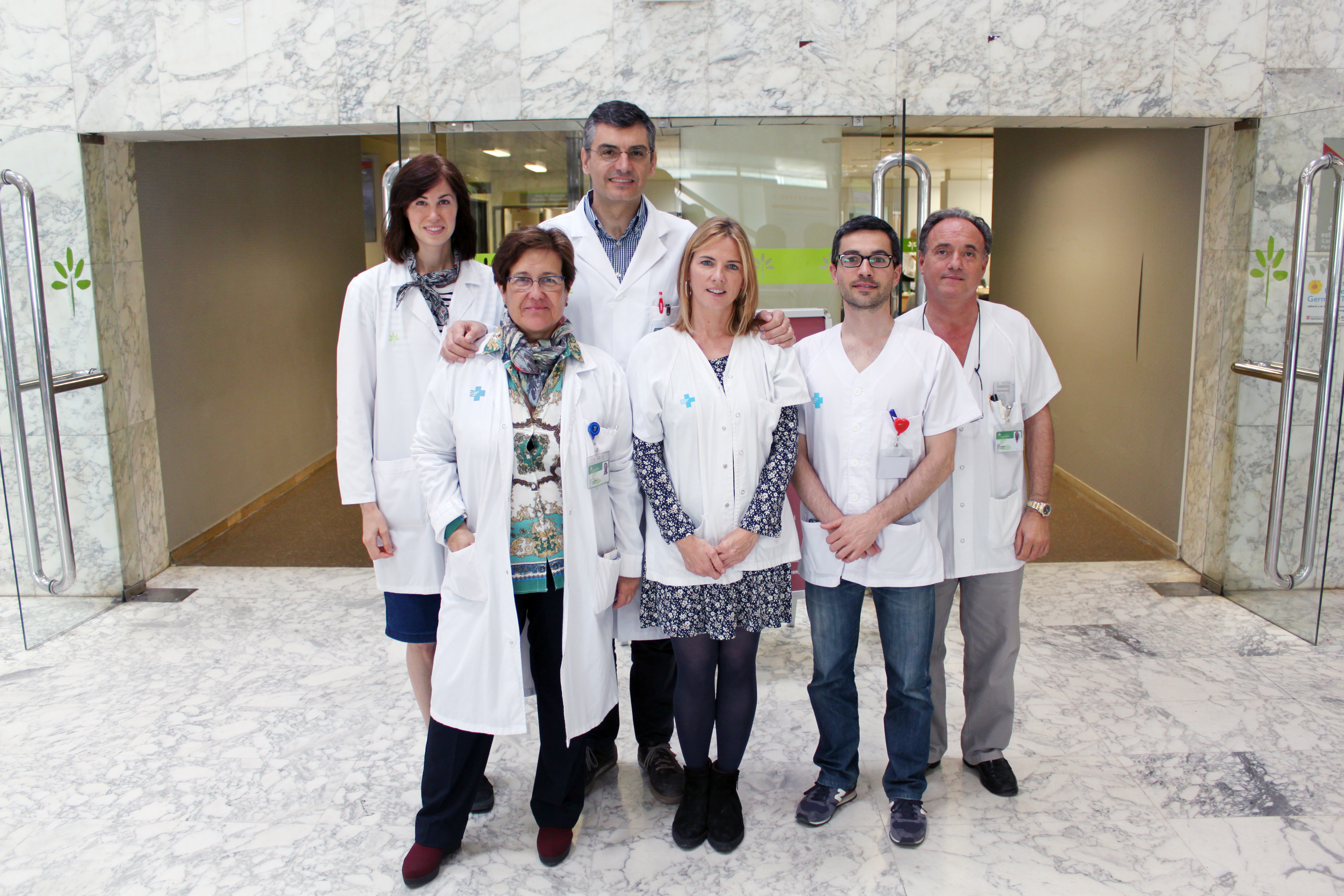Researchers at Can Ruti Campus enter into a licence agreement for the worldwide rights to the use of biomarker soluble neprilysin (sNEP) for assessing risk stratification and prognosis of heart failure patients
The biomarker sNEP will enable doctors to predict how heart failure patients will progress , and it may be valuable to better identify which patients may benefit most from neprilysin inhibition

23 April 2016. The group led by Dr Antoni Bayés-Genís of the Department of Cardiology of the Germans Trias i Pujol Hospital (HUGTiP) and the Germans Trias i Pujol Health Research Institute (IGTP) have signed a licence agreement with the American Company Critical Diagnostics for biomarker soluble neprilysin (sNEP). This will increase the range of diagnostic and prognostic markers currently promoted by the company. On the Spanish side, the law firm Rousaud Costas Duran managed the licence deal.
Antoni Bayés-Genis and Josep Lupón of the Department of Cardiology and Amparo Galán and Jaume Barallat of the Department of Clinical Biochemistry (HUGTPT/ IGTP) have pioneered during 2015 the identification of the predictive role of neprilysin in heart failure. They have shown that levels of circulating sNEP in serum samples of patients suffering from chronic heart failure have a positive association with cardiovascular outcomes.
The new heart failure drug Entresto© is a neprilysin inhibitor; Wall Street analysts have predicted that it will reach sales of $5-10 billion by 2020. The most commonly used biomarkers for HF until now are the natriuretic peptides BNP and NT-proBNP. BNP, but not NT-proBNP, is cleaved by neprilysin and, therefore, when a patient is under treatment its levels change as a function of treatment. sNEP does not seem to be affected other factors that affect the natriuretic peptide biomarkers such as patient age, body mass index or renal function. For these reasons Critical Diagnostics has identified a large market opportunity and clinical usefulness for sNEP in the management of HF patients.

